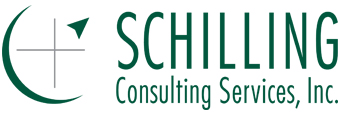Minimizing Risk in Strategy Implementation
With Fall being such a popular time for developing a new Strategic Plan, it’s not surprising that after the holiday break, the focus begins to shift to implementation. Most Strategic Plans include the development and deployment of new initiatives, expansion (or contraction) of services, or the execution of Tactics to help achieve one or more Goals. Some of these inherent changes come with risk and uncertainty. Problems may occur during implementation, jeopardizing the entire effort. And these days, no one wants the added drain on time and resources needed to address unanticipated problems. Fortunately, there are a few tools that can minimize risk and ensure you have effective contingencies for any unwanted surprises that may emerge during implementation.
Invaluable Preparation One of these tools is particularly well suited for larger scope initiatives. It’s even a great tool to use in the final stages of Strategic Plan Development. "The Process Decision Program Chart (PDPC) systematically identifies what might go wrong in a plan under development. In a PDPC, each potential problem is linked to one or more undesirable effects, and in turn, each effect is associated with a specific countermeasure. Countermeasures are developed to prevent or offset those problems. By using PDPC, you can either revise the plan to avoid the problems or be ready with the best response when a problem occurs.1" The PDPC helps you anticipate where problems could occur during implementation, and then design effective countermeasures, or in some cases, even reverse-engineer a better plan that avoids the problems all together.
Solve Problems Before They Occur! If you are implementing at a more detailed, operational level another tool can help: Failure Modes and Effects Analysis (FMEA). This structured analysis takes a small team sequentially through three major phases:
1. Identification of possible failure modes (ways the implementation can fail)
2. Comparative ranking of the failures based on the severity, frequency, and detectability of each failure
3. Prioritization of the highest ranking (worst) failures and the determination of the most effective way(s) to prevent them from occurring.
FMEA can be used as part of any new product or service design as well as current product / service improvement efforts, regardless of whether it is part of your Strategic Plan.
It’s About Managing Risk We often associate Risk Management with daily operations and the prepared response to situations that we hope will never occur. However, there is always some level of risk and uncertainty associated with implementing strategy; after all, Strategy is about change...and improvement. Fortunately, there are some great tools to make the implementation of improvement at any level easier and more successful.
If you would like help with using the PDPC or FMEA, or with other aspects of Plan implementation, including Business Plans or Feasibility Studies, contact me at your convenience.
Jeff
1 American Society for Quality Web Site (www.asq.org)
2 For more information on FMEA, I recommend a great little book on the topic, The Basics of FMEA, 2nd Edition, by R. Mikulak, R. McDermott, and M. Beauregard (ISBN-13: 978-1563273773).
